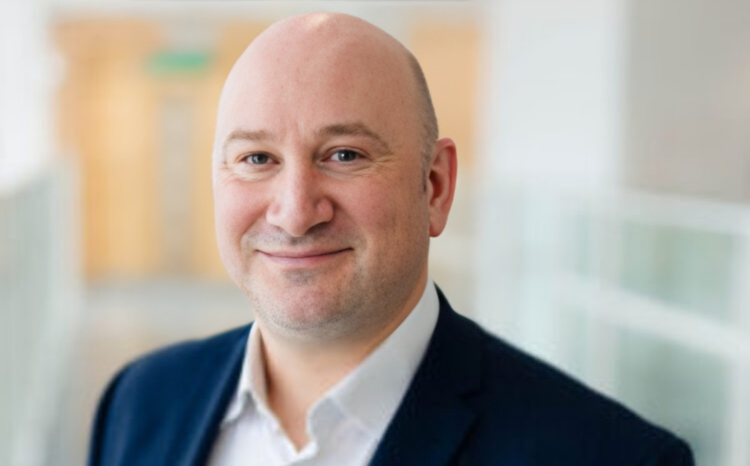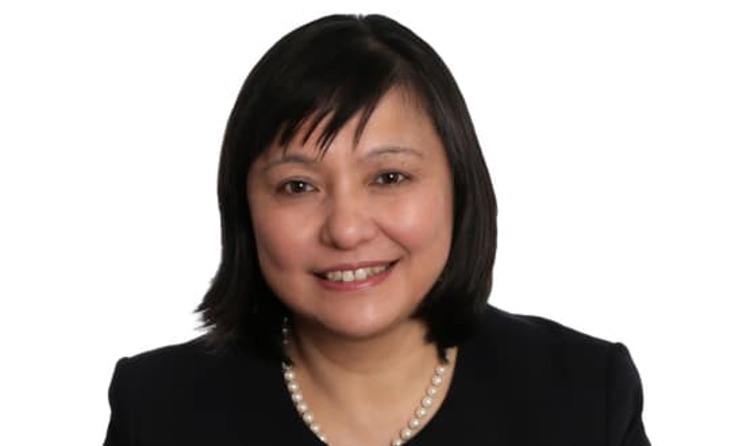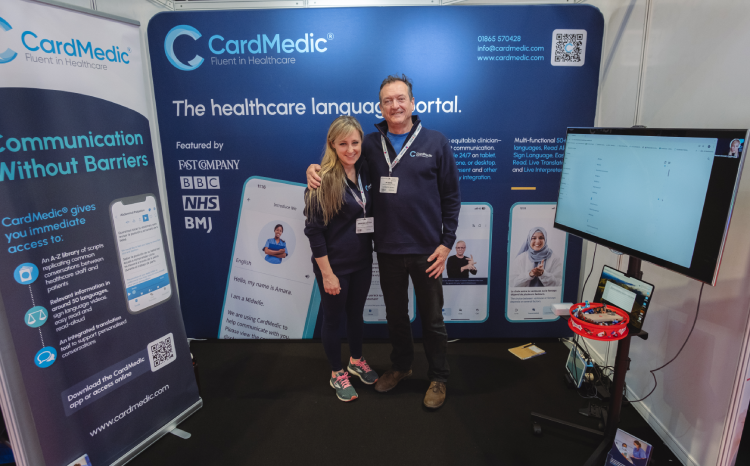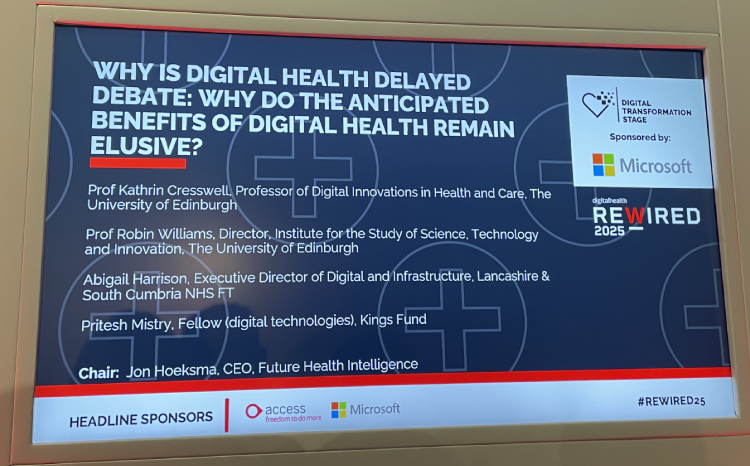Ed Prosser-Snelling: ‘Analogue to digital absolutely describes where we are’
- 8 November 2024

As executive digital lead and chief digital information officer (CDIO) of a trust known as the ‘digital desert’, Ed Prosser-Snelling has had a challenge on his hands.
Since the Norfolk and Norwich University Hospitals NHS Foundation Trust’s digital strategy was approved in 2023, he has been steering the move from one of immature digital systems to one which is able to meet the challenges of modern healthcare delivery.
The trust is planning to deploy an £88 million Meditech joint electronic patient record (EPR) system with James Paget University Hospitals NHS Foundation Trust and the Queen Elizabeth Hospital King’s Lynn NHS Foundation Trust in March 2026, as part of the Norfolk and Waveney Acute Hospital Collaborative.
Ahead of speaking at Digital Health Rewired 2025, Prosser-Snelling tells Digital Health News, about the journey to a joint EPR, his views on the federated data platform (FDP) and why the pressures on the NHS described in the Darzi review are all too real.
What led to the idea of having a joint EPR across three trusts?
Norfolk and Waveney is known for being a digital desert, and for various reasons we haven’t achieved the level of digital investment we require for at least 25 years.
It was in the ashes of our last attempt to form an EPR programme across primary, secondary and community care in 2018, that we considered what we needed to do differently. That EPR didn’t proceed past a strategic outline case, because we were unable to create an affordable business case.
There were lots of drivers for forming our digital collaborative approach. The financial driver is the economies of scale, which we achieve by having three hospitals on one system, just in terms of the digital costs, software costs, licensing costs etc.
It was in the ashes of our last attempt to form an EPR programme across primary, secondary and community care in 2018, that we considered what we needed to do differently.
We share a lot of services with the other hospitals, so having a single record across the three organisations will provide significant clinical benefits. Clinical and administrative staff will be able to see records across the three organisations, with appropriate governance controls.
The operational benefit is that it allows staff to move freely between the sites, because within Norfolk we struggle sometimes to attract talent.
What are the benefits of working as a collaborative?
Because we’ve come together around the EPR we’ve been able to grow a chief X information officer (CXIO) network, of our chief clinical information officers, operational information officers, nursing information officers, and heads of IT, who work together sharing information and skills, and undergoing shared training.
That’s provided a strong backbone for us to work with Meditech. Going into an EPR journey from a greenfield position, you need to have a strong, cohesive understanding amongst your clinical and operational bodies about what you want to get out of it and how you’re going to drive the process.
What challenges have you come across working the with two other trusts?
All of the hospitals have evolved to exist within the environment and the population that they serve, so understanding the history of the organisations has been key.
Norfolk and Norwich University Hospital is a large tertiary centre, the Queen Elizabeth Hospital serves a large geographically diverse frail elderly population and the James Paget University Hospital serves a population with additional needs because of its deprivation index.
When organisations work together it can be challenging, but we’ve overcome that by having a strong vision of that ‘one patient’ in the Norfolk Acute Hospitals who is able to benefit from all the strengths that the organisations offer.
What impact has the FDP had on your organisation?
I know that the FDP is perceived to be controversial in some circles, but for a digitally immature system, having that level of support and guidance has helped us and informed our data science strategy. The FDP is now at the centre of how we plan to innovate.
Using the Optimised Patient Tracking & Intelligent Choices (OPTICA) cloud application supported our winter plan last year and remains one of the most popular applications I’ve ever deployed.
I know that the FDP is perceived to be controversial in some circles, but for a digitally immature system, having that level of support and guidance has helped us
One of the investments I’ve made as CDIO is to have a head of data science because we’re building towards an environment where we have a complete clinical dataset with the EPR. We need specialist expertise at provider level, to guide our thinking as we navigate through complex data architecture and AI. Our CXIO network provides the use cases for new technology, and drives the pilot programmes forward. They are ready-made early adopters!
Throughout the EPR procurement process we’ve made it very clear that we want to have access to back-end data in order to be able to use it for population health management. There are some exciting things happening in that space, and acute hospitals can’t just throw it all over the fence to integrated care boards.
What are your digital goals?
The EPR pegs us to HIMSS Level 6, so that’s our goal. That will be paper-light moving to paperless.
We have a programme of work which runs parallel to the EPR, where we’re aligning the digital systems of the three organisations and making sure that we hold processes in common. That will include things like our patient portal, work around power apps and communication – specifically Alertive.
What resonated with you most in Lord Darzi’s review of the NHS?
The report resonates deeply with the challenges we face, we have some real analogue bits to our system in the form of large volumes of paper, and feel the pain of that every day.
We still write on paper in clinic and on the wards but we are a mixed paper and digital economy. This is the state you would avoid for as long as possible, but we have been trapped in it. Now that we have a date for EPR go live, staff are finally able to lift their heads and have hope.
All of the pressures described in the Darzi review are real and are felt on the frontline.
Darzi is clearly setting out a case for change, which is based a lot on the challenges that we have, and the report helps to orient our innovation efforts. In the operational planning cycle for 2025/2026 we are focusing on productivity tools, hoping to have a pilot project that will then attract national investment.
I’m a practicing pelvic surgeon and my personal waiting lists have been really large since Covid-19, so I feel those challenges. I work in an emergency setting as well as doing acute on call for gynaecology and I see the pressures that we’re under there, as well as dealing with those at executive levels.
All of the pressures described in the Darzi review are real and are felt on the frontline.
What will you be speaking about at Rewired 2025?
The reason I love working in digital is because it’s the intersection of so many different professions, such as clinical, financial, operational, estates and interaction with the private sector and suppliers.
I’m interested to talk about how that has happened for us, how it could happen in the future and the kind of investments in leadership and culture change we need to see in digital at provider level and beyond.
Prosser-Snelling will be speaking at Rewired 2025 at the NEC in Birmingham on 18-19 March 2025. Register here.
The event is co-headline sponsored by The Access Group and Microsoft, whilst Alcidion, Nervecentre, Solventum and Cynerio are also sponsors.




